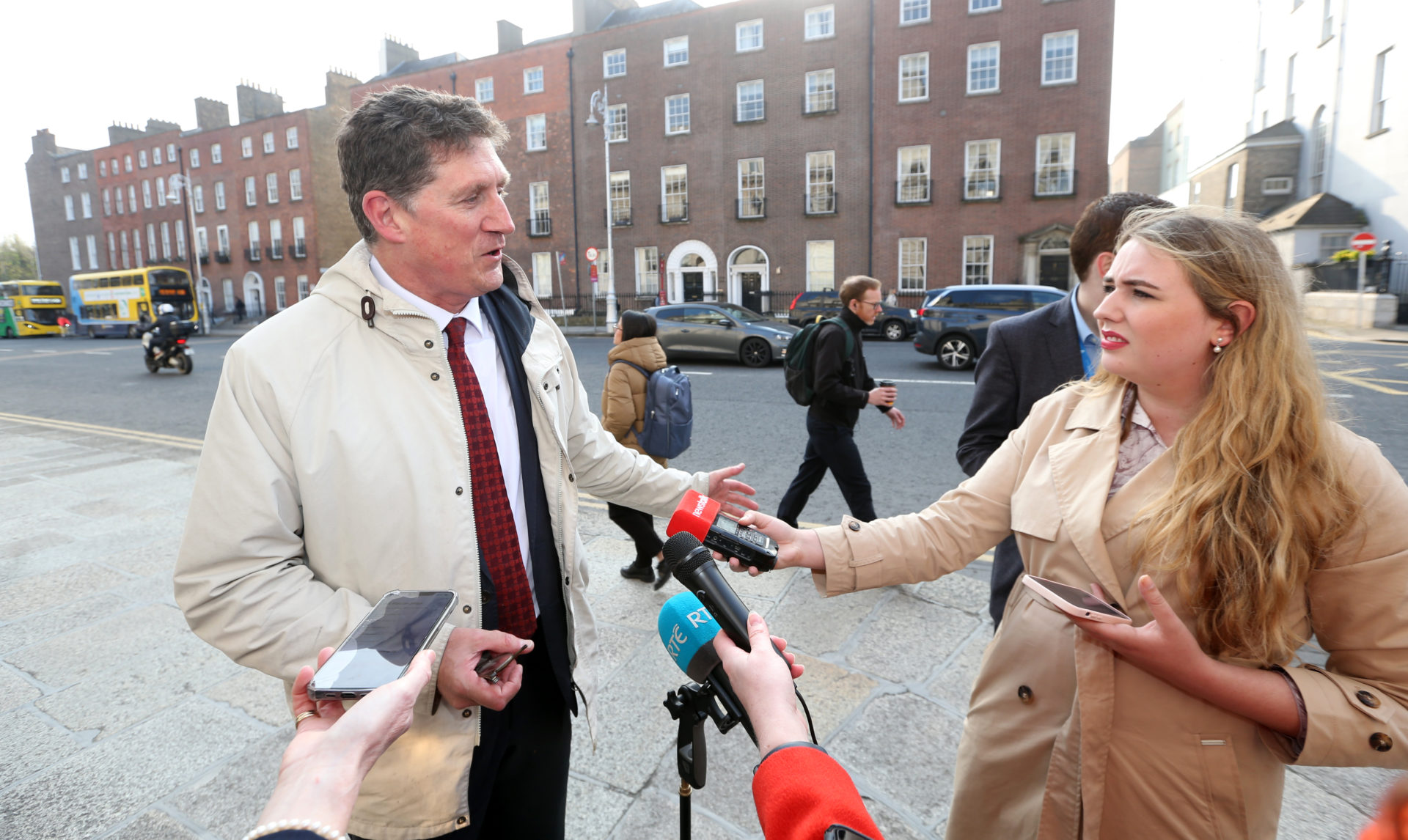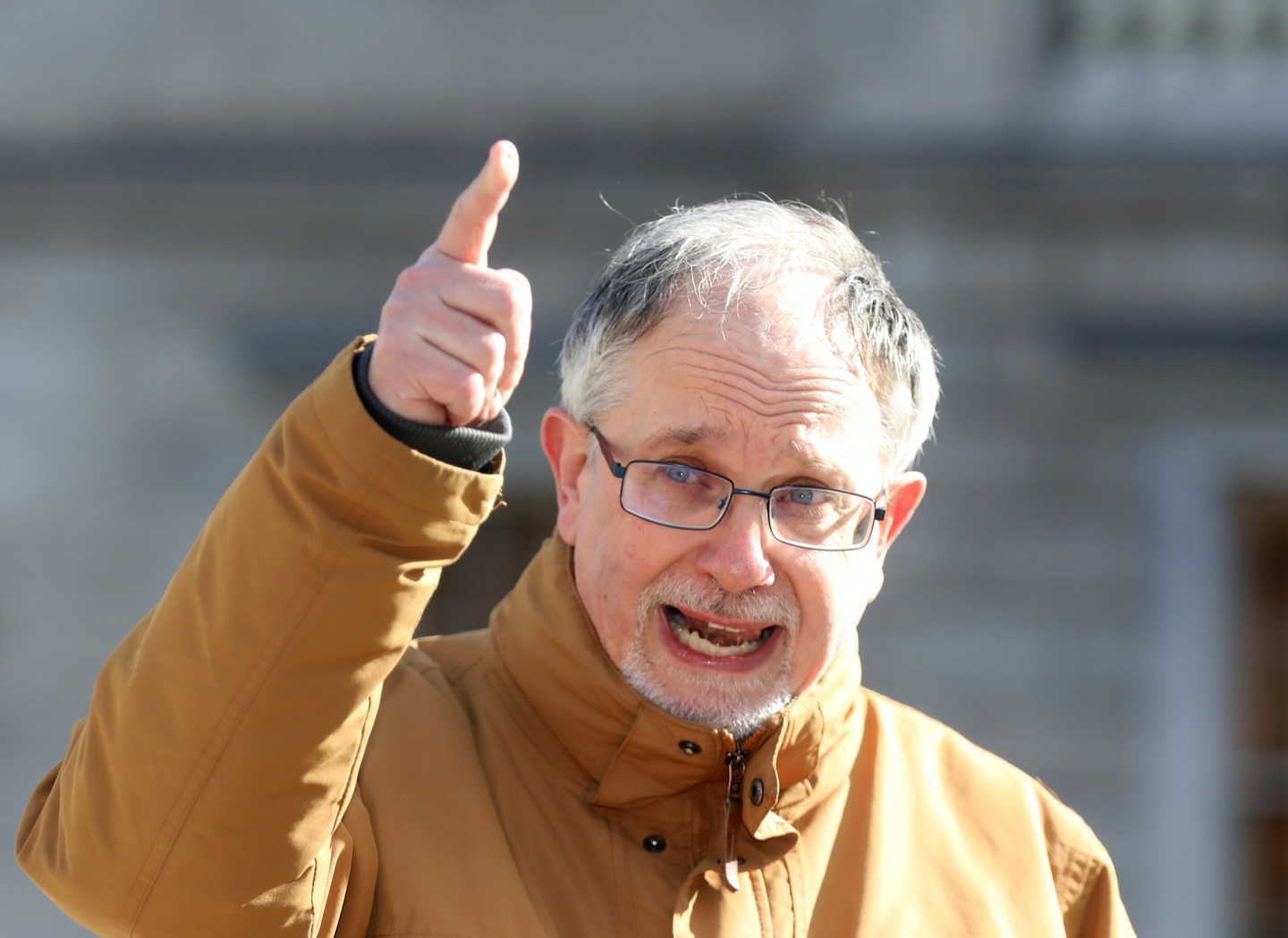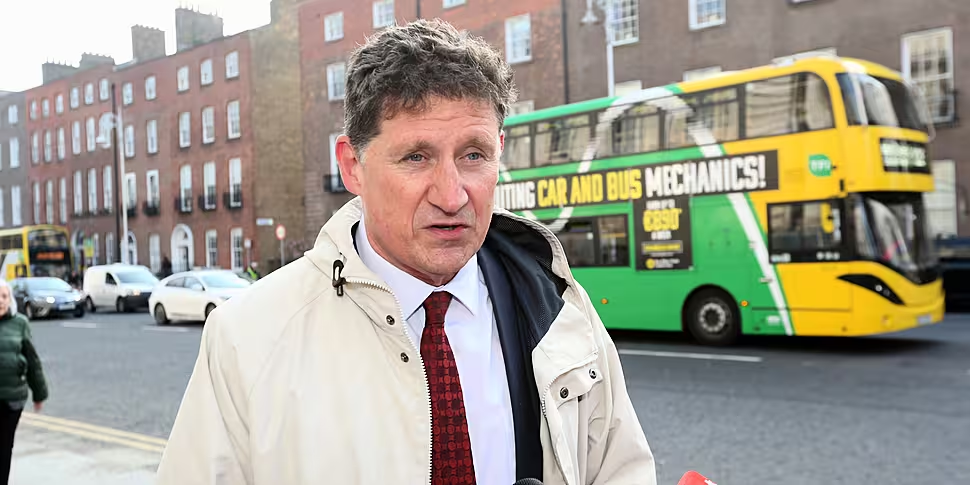A new national strategy aimed at freeing up space on the country’s roads is not ‘anti-motorist’, the Transport Minister has said.
Eamon Ryan presented the new strategy to Cabinet earlier today.
The strategy aims to free up roads and reduce congestion by reducing reliance on private cars.
"Not anti-car"
Speaking on his way into Cabinet earlier, Eamon Ryan said he is not ‘anti-motorist’ - but a different approach is needed to ease congestion in Irish towns and cities.
“This is not against someone in a car,” he said.
“We’re still going to have a lot of people driving – but this doesn’t work.
“It’s not anti-car, it’s not anti-motorist. Everyone in a car knows that if everyone else is driving then the road is full and no one gets anywhere fast.”
“So, it’s just making a system that works for everyone – that’s what we need to do.”
 Green Party leader Eamon Ryan talking to the media ahead of this morning’s Cabinet meeting, 18-04-2023. Image: Sasko Lazarov/RollingNews
Green Party leader Eamon Ryan talking to the media ahead of this morning’s Cabinet meeting, 18-04-2023. Image: Sasko Lazarov/RollingNewsThere have been suggestions the strategy will look at introducing more car-free zones as well as congestion charges for driving in certain areas.
Minister Ryan said charges are not the priority with this plan.
“I don’t see congestion charges … I don’t think that’s the first response at all,” he said.
“I think it has to be the reallocation of space to make the alternatives quicker, better, cheaper.
“Public transport numbers are on the rise. We are unusual in most European countries, partly because we’ve reduced the fares, but also, we now need to make sure that the buses don’t get stuck in traffic.
“[It’s about] giving them space and to do that quickly.”
 Cork TD Mick Barry on the plinth outside Leinster House, 07-03-2023. Image: Leah Farrell/RollingNews
Cork TD Mick Barry on the plinth outside Leinster House, 07-03-2023. Image: Leah Farrell/RollingNewsMeanwhile, Socialist TD Mick Barry said any push towards public transport should involve making it free.
“The Green Party have, unfortunately, voiced opposition to that and now seem to be flying a kite for the introduction of congestion charges and an increase in parking charges,” he said.
“I will question the Taoiseach on these issues today and I’ll be making it crystal clear that there will be strong public opposition to any attempt to go down this road.
Minister Ryan said he hopes to see a significant improvement in the amount of space on our roads for public transport, cyclists and pedestrians in the next two to three years.
The final plan will be drawn up following widespread consultation with the public.









